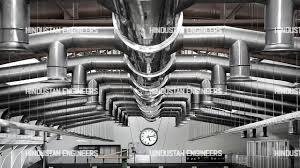A heat exhaust system, also known as an exhaust ventilation system, is designed to remove heat and hot air from an enclosed space or area. It is commonly used in industrial and commercial settings, as well as in some residential applications, to control temperature and improve indoor air quality.
Here are some key components and features of a heat exhaust system:
Exhaust Fans: These fans are the main components of the system and are responsible for removing the hot air and heat from the space. They are typically mounted on walls, ceilings, or roofs and work by creating negative pressure, drawing air out of the area and expelling it outside.
Ductwork: Ducts are used to transport the hot air from the space to the exhaust fans. They are usually made of metal or flexible materials and are designed to efficiently transport air while minimizing resistance and pressure drop. Properly sized and installed ductwork ensures effective heat removal.
Louvers or Vent Openings: To allow fresh air to replace the exhausted hot air, louvers or vent openings are often installed in the area. These openings allow air to enter, creating a flow that helps facilitate heat removal and ventilation.
Control System: Many heat exhaust systems include a control system that regulates the operation of the fans. The control system can be automated or manual and may include features such as adjustable speed controls, timers, and thermostats to optimize energy efficiency and maintain desired temperature levels.
Safety Features: Depending on the specific application, heat exhaust systems may include safety features such as alarms, emergency shutdown switches, and temperature sensors to ensure safe and reliable operation.
When selecting a heat exhaust system, it is important to consider factors such as the size of the space, the heat load, the desired temperature reduction, and any specific requirements or regulations. Consulting with HVAC professionals or reputable manufacturers can help in selecting the appropriate system for your needs.
It is worth noting that the term “heat exhaust system” is sometimes used more broadly to refer to systems that not only remove heat but also exhaust other by products such as fumes, gases, or contaminants. In such cases, additional components such as filters or scrubbers may be included to address specific air quality concerns.

